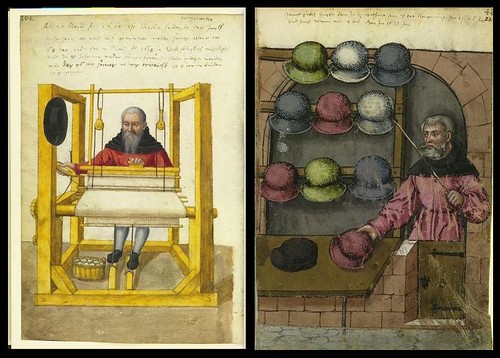

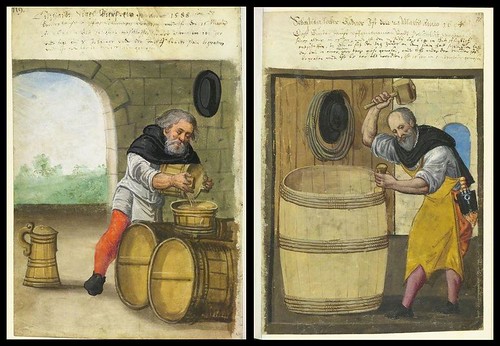

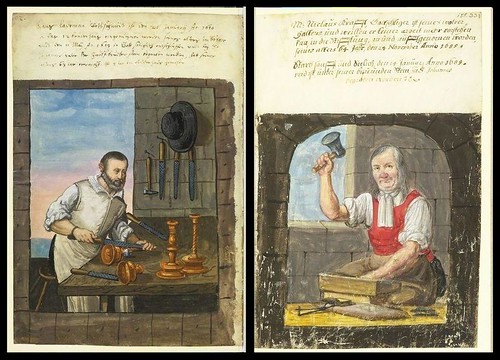
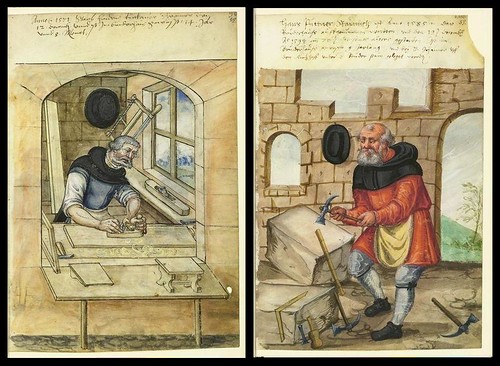


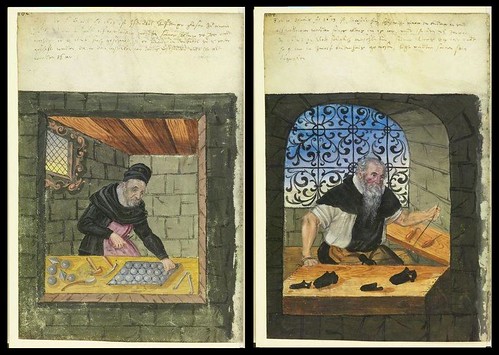
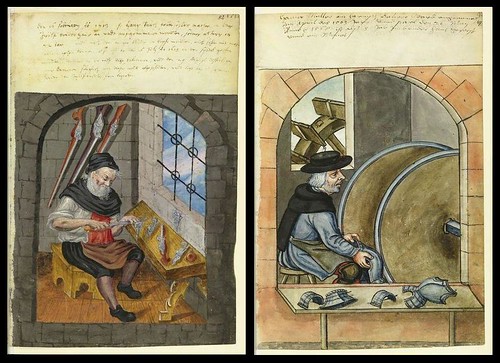

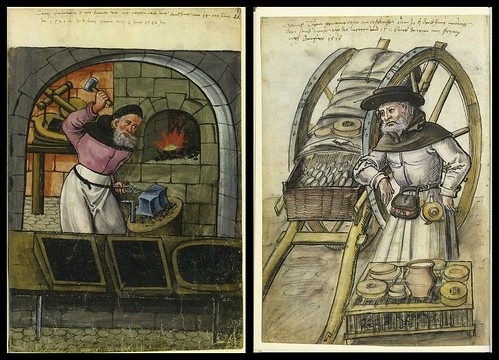
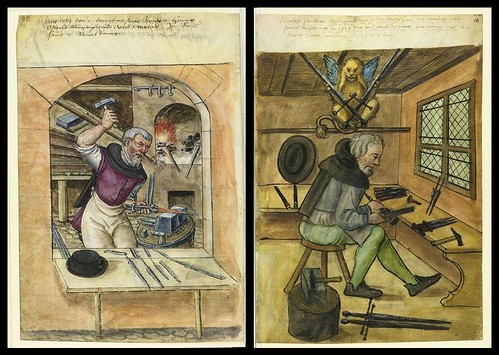
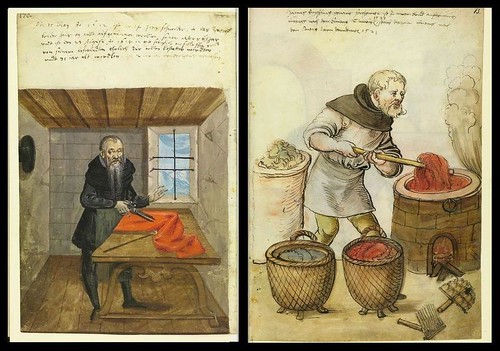
In 14th century Germany, a wealthy trader by the name of Mendel established a charitable endowment in the city of Nuremberg, known as the Twelve Brothers House Foundation (Zwölfbrüderhausstiftungen). A dozen elderly and unwell (but capable) citizens were (I assume) given a place to live in exchange for their performing work duties.
Although the house life and routine was said to have been inspired by the example of the apostles, there was a fairly anti-clerical or anti-religious tone to the rules and priests were formally excluded from being taken in as one of the 'brothers'. The house served as a model for the commencement of similar charity foundations in other German cities.
Mendel's grandson began the practice in the 15th century of having sketches made of each of the brothers engaged in their chosen employment together with detailed notes about the tools and practices relating to their work. The manuscripts were updated until (I think) the beginning of the 19th century, although portraits of craftsmen engaged in their work were only produced in the 15th and 16th centuries.
The images depicted above come from the Landauer Twelve Brother's House manuscript - essentially a similar foundation copied from Mendel's original idea. The Mendel and Landauer manuscripts are said to be among the most important primary sources in relation to the crafts and guilds of the middle ages in Germany.
A website has been established and both sets of manuscripts are to be uploaded. At present, two volumes of the Landauer books can be viewed, although the suggestion on the site that high resolution scans have been made is not reflected in the files available to the public. I have taken the liberty of removing all the watermarks from the above images - as though ~450px wide illustrations need protecting (!) - and clicking on any image will take you through to a full sized version. The occupations in the captions above are a 'best guess' at times.
If you read German, you will find a wealth of information, which is why I've included the direct links to each image above. For the rest of us, translations are at best sketchy and I found them more often than not confusing and fairly useless. But the site is being supported by some useful metadata that allows searching by tool, occupation, disease (the manuscripts are, I suspect, fairly detailed in their reports about individual members) and the like.
- Die Mendelschen und Landauerschen Hausbücher. [trans.]
- This site provides the best background in (semi-fractured) English.
- Via Archivalia.
- UPDATE: See Jeff Peachey's post from 2009 which has some more information.




No comments:
Post a Comment